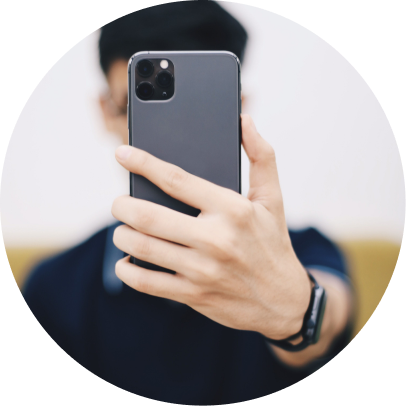A current account is for daily transactions like paying bills and receiving salaries, with easy access to funds. A savings account is used for long-term saving, offering interest on deposits but with limited withdrawals. Each serves a unique financial purpose.

If you’re comparing a Current Account Vs Saving Account it’s best to not think of them as direct competitors. Both types of accounts serve different purposes and it’s recommended to have both for healthy financial management.
A current account in the UK is essential for making day-to-day payments and transactions, savings accounts have higher interest rates but can make your money less accessible.
Although both types of accounts have their advantages and can come with similar features, there are some differences that you need to be aware of, that we will explain in this article.
Main Difference Between Savings Accounts And Current Accounts

Key Features of Current Accounts
Sometimes known as a checking account, current account is typically used for everyday banking purposes and can facilitate regular transactions such as direct debit, standing orders and payments online and in-store.
If you’re over the age of 16 in the UK, you can open a current account and use it to receive wages, tax credits or universal credit payments. A current account allows you quick and instant access to your money whenever you need it.
Transactions & Spending
The purpose of a current account is to make payments and transactions. There are few restrictions on how many transactions you can make and how you spend your money.
To help make those payments as convenient as possible, most traditional banks, challenger banks and alternative banking solutions have heavily invested in multiple ways to access your current account such as being provided with a bank card, access to online banking and the ability to download a mobile banking app straight onto your smartphone.
Overdrafts & Loans
An overdraft is a borrowing facility that allows you to lend money through your current account. There are two types of overdrafts:
- Arranged overdraft: An arranged overdraft is the set amount you can borrow that has been approved by your banking platform.
- Unarranged overdraft: If you go over the agreed overdraft limit, you may then go into an unarranged overdraft. This means you can incur much higher fees and daily charges than your agreed overdraft limit. Going into an unarranged overdraft can also have a negative effect on your credit rating.
Although overdrafts can be useful for emergency payments when you’re short of cash, they often involve interest fees that will need to be paid on top of any money that you’ve borrowed.
No Interest Rates
Unlike saving accounts, you don’t earn any interest on your current account, no matter how much money you have in there already. However, some banking providers offer high-interest savings accounts if you already have a bank account with them.
Charges & Fees
If you can’t get access to a free basic account, some banking providers charge a small fee for packaged current accounts, where you usually pay a monthly fee in exchange for rewards such as cashback, discounts or home insurance packages.
If you go overdrawn or can’t afford to pay a direct debit, you will usually be charged by your bank but these fees should be included on their terms and conditions or associated costs page.

Key Features Of Savings Accounts
A savings account is an interest-earning bank account, which means any money you have within this type of account will earn interest and grow in value. A savings account has been designed to encourage and promote savings and not spending.
Savings accounts are useful for individuals who earn a steady or regular income, such as salaried employees. Additionally, a savings account can be used to achieve a short-term savings goal such a holiday, wedding, or car.
Harder to Spend your Money
By design, most savings accounts make it harder to spend the money you’ve deposited in there as it’s in their best interest for you to keep your money in their bank. There are often limits to how many withdrawals you can make, and for some savings accounts, there is a minimum balance that you must exceed.
In fixed savings accounts, the money is locked away for a set period of time, usually between one and five years but you’ll usually be rewarded with a higher interest rate.
Earn Interest on Your Savings
An interest payment from a bank is the amount paid to you for keeping your money in an interest-bearing account, like a savings account or a fixed deposit. Essentially, it’s the bank’s way of paying you for the privilege of using your money.
The bank uses your deposits to fund loans to other customers, and in return, they pay you interest. The rate at which you earn this interest depends on the type of account you have and the bank’s interest rates. Interest can be calculated daily, monthly, or annually and is usually added to your account balance.
In response to the UK cost of living crisis, the Bank of England has been forced to continuously raise its base rate to combat inflation. As of 25th January 2024, the Bank of England base rate stands at 5.25% which is good news for savers.
The longer you agree to keep your money in a savings account the higher the interest rate you will receive, for example, if you use a fixed savings account you can get around 5.16% added interest. Whilst, if uoi opt for an easy-access savings account, you’ll be looking at an interest rate of 5.13%.
Both interest figures are accurate as of 25th January 2024 as reported by MoneySavingExpert led by Martin Lewis
Low or No Account Fees
Banking platforms typically charge very little, if any, fees on savings accounts. This is because, unlike current accounts, they don’t cost banks as much to manage.
Additionally, banking platforms make more money off something called the “spread”. This is the difference between the interest rate they pay you for saving your money with them and the interest rate they charge on loans and overdrafts they fund using your money.

Get the Right Banking Account for You
Getting the best possible account to suit your needs is essential. However, if you suffer from a poor credit history or don’t currently have a UK address, many high street bank accounts that offer an overdraft facility, usually conduct a credit check and require proof of address before being able to open an account with them.
Here at Suits Me®, we’re an alternative solution and offer three different types of accounts suitable for anyone – regardless of their background, financial position, or credit history.
Our accounts come with their own benefits and features. However, all personal accounts come with online access, a mobile app and a contactless Mastercard® debit card at no extra cost and best of all, your Suits Me® account can be opened online within minutes (so you don’t even need to leave the comfort of your own home!)
To learn more, check out our Premium and Premium Plus accounts and discover which of our accounts could work for you.





